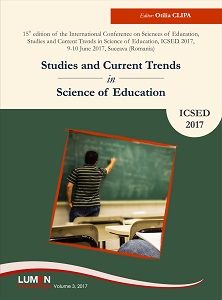The Role of Active-Participative Methods in the Teaching and Learning of Morphology in Primary School
The Role of Active-Participative Methods in the Teaching and Learning of Morphology in Primary School
Author(s): Cristina Loredana Bloju
Subject(s): Social Sciences
Published by: Editura Lumen, Asociatia Lumen
Keywords: active-participative methods; morphology; primary education.
Summary/Abstract: Traditional eLearning platforms are teacher centred and do not allow open and free access to education. To follow a course on a traditional platform the students must have a certain profile (knowledge background) and, at the end, they obtain new knowledge / abilities / competences. In 2011-2012 have been developed the first MOOC (Massive Open Online Courses) platforms with the aim to vastly increase access to education. The MOOC platforms have some differences compared to traditional eLearning platforms: the number of students in a course can be very high (tens of thousands or even hundreds of thousands), the role of the tutor is less significant, the learning assessment is based on surveys and peer assessments and courses may be enriched with multimedia and hypermedia materials. Among MOOC platforms, open edX is a very popular platform developed by a consortium of universities from USA. Due to the fact, this platform can be installed for free, it is under continuous development, scalable and well documented, it has been chosen for many educational projects. This paper presents a comparative analysis between a traditional learning platform (Moodle) and a MOOC platform (open edX) taking into consideration the data achieved in four educational projects.
Book: Studies and Current Trends in Science of Education
- Page Range: 38-46
- Page Count: 9
- Publication Year: 2018
- Language: English
- Content File-PDF

